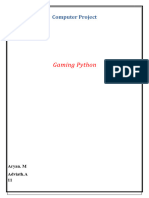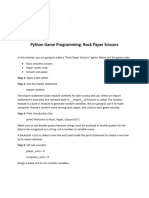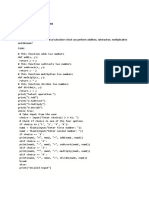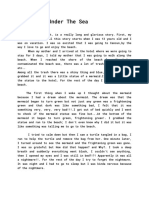0% found this document useful (0 votes)
8 views7 pagesProject CS.
The document outlines a project for a Rock-Paper-Scissors game implemented in Python, aimed at teaching programming basics. It includes sections on game features, rules, source code breakdown, and sample gameplay. The project emphasizes user input, conditional logic, loops, and random number generation, making it suitable for beginners in programming.
Uploaded by
abdullahirshad1112005Copyright
© © All Rights Reserved
We take content rights seriously. If you suspect this is your content, claim it here.
Available Formats
Download as DOCX, PDF, TXT or read online on Scribd
0% found this document useful (0 votes)
8 views7 pagesProject CS.
The document outlines a project for a Rock-Paper-Scissors game implemented in Python, aimed at teaching programming basics. It includes sections on game features, rules, source code breakdown, and sample gameplay. The project emphasizes user input, conditional logic, loops, and random number generation, making it suitable for beginners in programming.
Uploaded by
abdullahirshad1112005Copyright
© © All Rights Reserved
We take content rights seriously. If you suspect this is your content, claim it here.
Available Formats
Download as DOCX, PDF, TXT or read online on Scribd
/ 7































































































